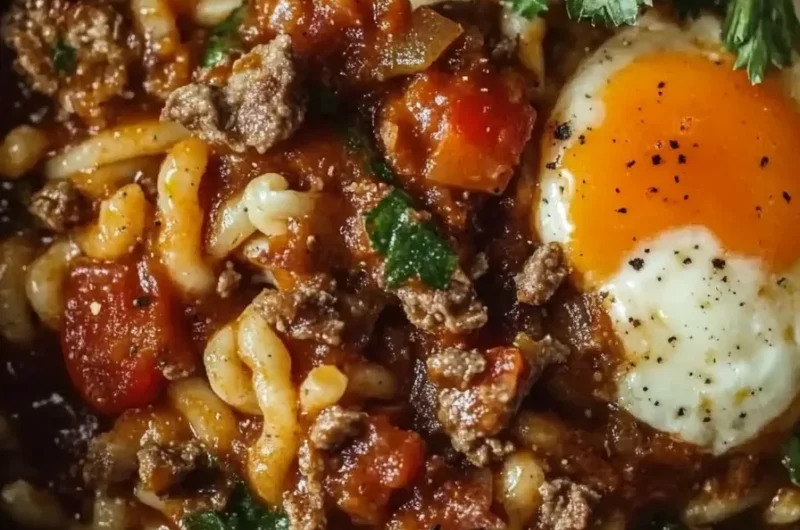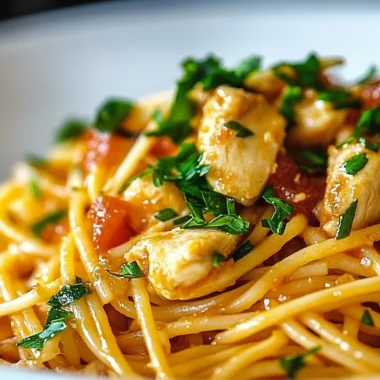20 Best Depression Era Recipes Ever are not just dishes; they are a testament to resilience and creativity in cooking. These recipes emerged during one of the toughest times in American history, showcasing how to create meals that are both affordable and delicious. Today, they remain a cherished part of culinary heritage, reminding us of a time when resourcefulness was key to survival.
The Depression Era was marked by economic hardship, leading families to find innovative ways to stretch their food budgets. As a result, you’ll find these recipes often rely on simple, accessible ingredients. They emphasize flavor and satisfaction over extravagance, making them timeless options for anyone wanting to create wholesome, fulfilling meals without breaking the bank.
In this article, we will explore the 20 best Depression Era recipes that are not only incredible but also full of nostalgic flavors. Whether you’re looking to reconnect with culinary traditions or simply trying to cook on a budget, these recipes offer a delightful way forward. Join me as we dive deep into their backgrounds, benefits, and preparations, which will undoubtedly become a staple in your kitchen.
Why You’ll Love These Recipes
Depression Era recipes have stood the test of time, and here are several reasons why they are so beloved:
1. Budget-Friendly: Most of these recipes require inexpensive, everyday ingredients. This makes them perfect for feeding families without straining finances.
2. Nostalgic Flavors: Many of these dishes evoke childhood memories and stories from grandparents, making them more than just food; they carry emotional significance.
3. Easy to Prepare: With straightforward cooking techniques and simple steps, these recipes cater to novice cooks and experienced chefs alike.
4. Satisfying Meals: These recipes are designed to fill bellies and warm hearts. From hearty casseroles to comforting soups, each dish is sure to please.
5. Health-Conscious Options: Many Depression Era meals incorporate whole grains and vegetables, promoting a balanced diet.
6. Creative Uses of Leftovers: These recipes encourage creativity, turning common leftovers into delightful new meals.
When you choose to make these recipes, you’ll engage with a part of history that highlights ingenuity and community spirit. The taste, aroma, and memories associated with these dishes make for an enriching cooking experience.
Preparation and Cooking Time
When planning to make these Depression Era recipes, here’s a general guide for your time management:
– Preparation Time: Usually between 15 to 30 minutes, depending on the complexity of the recipe.
– Cooking Time: Ranges from 20 minutes for quick recipes to over an hour for casseroles or roasts.
– Total Time: From start to finish, expect to spend anywhere from 30 minutes to two hours on preparing and cooking these dishes.
This versatility in timing allows for flexibility in your cooking schedule, making it easy to fit these meals into your daily routine!
Ingredients
Here’s a summarized list of common ingredients used across many of the 20 Best Depression Era Recipes Ever:
– Flour (all-purpose or whole wheat)
– Sugar (granulated)
– Baking powder
– Baking soda
– Salt
– Milk (or milk alternatives)
– Eggs
– Butter or margarine (some recipes may use vegetable oil)
– Water or broth (for soups and stews)
– Vegetables (potatoes, carrots, onions, etc.)
– Beans (dry or canned)
– Rice or pasta
– Canned tomatoes or tomato sauce
– Herbs and spices (like thyme, oregano, and pepper)
These ingredients can be easily sourced and provide a myriad of flavors and textures in the dishes you’ll create.
Step-by-Step Instructions
Here are some straightforward steps you can expect to follow with most Depression Era recipes:
1. Gather Ingredients: Ensure you have everything ready before starting to cook.
2. Preheat Oven/Stovetop: If your recipe requires baking or stovetop cooking, make sure to preheat as directed.
3. Prepare the Ingredients: Chop, measure, and mix ingredients as specified in your chosen recipe.
4. Follow the Recipe Steps: Adhere to the specific cooking instructions for the recipe, adjusting as needed.
5. Check Cooking Times: Use timers to ensure items are cooked properly; adjust times according to your own equipment.
6. Taste and Adjust Seasoning: Always taste your dish before serving and adjust seasonings as needed.
7. Serve with a Side: Consider serving alongside bread, salads, or other dishes that complement the main course.
Following these steps will guide you through creating your meals effortlessly.
How to Serve
To serve your Depression Era recipes perfectly, consider these ideas:
1. Presentation: Use simple plates or bowls to showcase the rustic charm of your dishes.
2. Accompaniments: Pair main dishes with sides like cornbread or steamed vegetables to create a hearty meal.
3. Generous Portions: Serve hearty portions that embody the essence of comfort food.
4. Family Style: Consider serving meals family-style, allowing everyone to help themselves and create a sense of community at the table.
5. Leftovers: Encourage guests to take home leftovers. These meals reheat well and can be enjoyed again the next day, which emphasizes the resourcefulness of the era.
By thoughtfully serving these meals, you’ll create an inviting atmosphere that honors the spirit of the Depression Era, providing warmth and connection amongst diners.
Additional Tips
– Use Fresh Ingredients: Whenever possible, opt for fresh fruits and vegetables to enhance the flavor of your dishes.
– Season Appropriately: Don’t hesitate to adjust seasonings. Taste as you cook to find the perfect balance.
– Cook in Batches: Consider making larger quantities and storing extras for easy future meals.
– Enhance with Herbs: Fresh or dried herbs can elevate the taste without extra cost, so don’t skip them.
– Keep it Simple: Remember that the essence of these recipes is simplicity, so avoid over-complicating the cooking process.
Recipe Variation
There’s plenty of scope for creativity! Here are a few variations to inspire your cooking:
1. Use Alternate Grains: Replace rice with quinoa or barley for a unique twist in soups and casseroles.
2. Add Proteins: Incorporate leftover meats, tofu, or legumes to boost protein content in your meals.
3. Experiment with Cheese: Try different cheese varieties to find the best flavor combination for your casseroles.
Freezing and Storage
– Storage: Store leftovers in airtight containers in the refrigerator. Most recipes will remain good for 3-5 days.
– Freezing: Many Depression Era recipes freeze well, such as soups and casseroles. Ensure they are cooled before wrapping tightly and storing them in the freezer for up to 3 months.
Special Equipment
While Depression Era recipes often require minimal tools, here’s a list of handy equipment that can streamline your cooking:
– Large pots and pans for soups and stews
– Baking dishes for casseroles
– Mixing bowls for combining ingredients
– Measuring cups and spoons for accuracy
– A sharp knife and cutting board for vegetable prep
Frequently Asked Questions
What should I do if I don’t have a specific ingredient?
You can often substitute similar ingredients. For instance, if you’re missing eggs, a mashed banana or applesauce can work in many recipes.
How can I make these recipes healthier?
Consider reducing sugar or using whole grain alternatives. You can also add more vegetables to increase nutritional value.
Can I make these meals vegetarian?
Absolutely! Many Depression Era recipes are inherently plant-based, and you can adjust meat-based dishes by using vegetable broth or legumes instead.
What if I don’t have time to make these from scratch?
Many of these recipes can be prepared in advance and reheated. This approach helps save time on busy days.
Conclusion
The 20 Best Depression Era Recipes Ever are not only a journey into history but also a celebration of economical and tasty cooking. These dishes allow you to create fulfilling meals using accessible ingredients while embracing the spirit of creativity and resourcefulness. By incorporating these recipes into your culinary repertoire, you are honoring a rich tradition of home cooking that prioritizes flavor and community.
20 Best Depression Era Recipes Ever: An Incredible Ultimate Collection
- Prep Time: 15 minutes
- Cook Time: 30 minutes
- Total Time: 45 minutes
Ingredients
Here’s a summarized list of common ingredients used across many of the 20 Best Depression Era Recipes Ever:
– Flour (all-purpose or whole wheat)
– Sugar (granulated)
– Baking powder
– Baking soda
– Salt
– Milk (or milk alternatives)
– Eggs
– Butter or margarine (some recipes may use vegetable oil)
– Water or broth (for soups and stews)
– Vegetables (potatoes, carrots, onions, etc.)
– Beans (dry or canned)
– Rice or pasta
– Canned tomatoes or tomato sauce
– Herbs and spices (like thyme, oregano, and pepper)
These ingredients can be easily sourced and provide a myriad of flavors and textures in the dishes you’ll create.
Instructions
Here are some straightforward steps you can expect to follow with most Depression Era recipes:
1. Gather Ingredients: Ensure you have everything ready before starting to cook.
2. Preheat Oven/Stovetop: If your recipe requires baking or stovetop cooking, make sure to preheat as directed.
3. Prepare the Ingredients: Chop, measure, and mix ingredients as specified in your chosen recipe.
4. Follow the Recipe Steps: Adhere to the specific cooking instructions for the recipe, adjusting as needed.
5. Check Cooking Times: Use timers to ensure items are cooked properly; adjust times according to your own equipment.
6. Taste and Adjust Seasoning: Always taste your dish before serving and adjust seasonings as needed.
7. Serve with a Side: Consider serving alongside bread, salads, or other dishes that complement the main course.
Following these steps will guide you through creating your meals effortlessly.
Nutrition
- Serving Size: 4-6 servings
- Calories: 350 kcal
- Fat: 8g
- Protein: 10g







